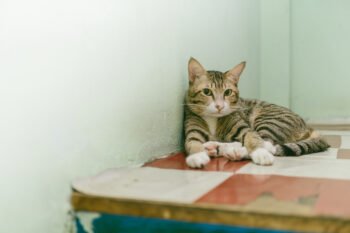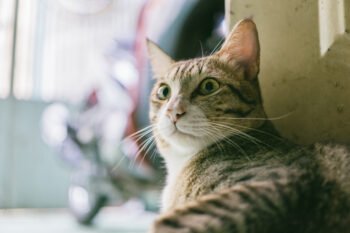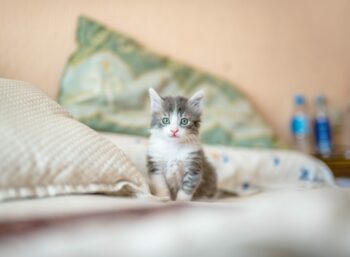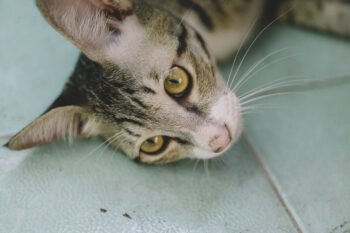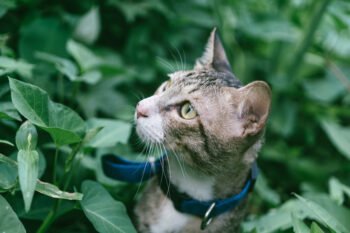Chances are, you use energy-efficient lighting in your home, and you unplug your appliances. If you follow these and other green lifestyle guidelines, your carbon footprint — the amount of carbon dioxide emissions created by your activities — is likely at a minimum. But have you thought about your cat’s impact on the environment?
Why Your Cat’s Carbon Footprint Matters
According to lifelong environmentalist Holly Tse, “a 2007 survey by the American Veterinary Association states that there are over 80 million cats in American households.” Tse, who blogs about green living ideas for felines at GreenLittleCat.com, adds, “Reducing one cat’s carbon footprint is helpful, but 80 million cats collectively could make an enormous difference!”
Since plenty of eco-friendly cat products are now on the market, it’s clear that many pet owners want to include their cats in their green lifestyle. Here’s how you can “green” every area of your cat’s life:
- Cat litter “Clay going to a landfill is terribly detrimental for the environment,” says Dr. Nicholas Dodman, a veterinarian, director of the Tufts Animal Behavior Clinic and author of The Cat Who Cried for Help. The next time you go to the supermarket, consider buying a litter that’s made from natural or recycled materials.
- Cat bedding Check the tags to make sure your cat’s bedding consists of natural, organic cotton or hemp. “Hemp is durable and natural — it basically lasts forever,” says Dodman.
- Cat carriers Carriers made from materials like recycled plastic are better for the planet and your cat. Advises Tse: “Petmate makes a kennel that is made from 25 percent recycled materials.” Other manufacturers offer carriers made out of hemp and even recycled water bottles.
- Cat toys It’s easy and fun to make your own cat toys. For example, try making the following toys out of a toilet paper roll:
1. “Put treats inside it, close its sides with sticky tape, poke a few holes and toss it to your cat,” suggests Dodman. “You just used what was going to be waste.”
2. “Press it flat and cut it into 1/4-inch rings. Pop the rings back into shape and toss into the air for your cat to catch,” offers Tse.
- Cat treats Eco-friendly bites are the most delectable for your cat. Look for organic catnip — or better yet, grow your own. Visit OnlyNaturalPet.com or you local pet store for a Grow Your Own Catnip Plant kit.
- Cleaners If you clean your home with a variety of chemical-based products, it’s time to rethink your cleaning methods. Harsh chemicals are bad for the environment and are a turnoff to your cat. They can also be disastrous for its health. “Over time, our pets develop a much higher concentration of toxic chemicals in their systems than humans do,” says Tse. “Since [your cat] spends so much time grooming itself, it may ingest the chemicals.”For a toxin-free home environment, try enzyme-based products. “Enzymes are biomolecules that digest the organic odor-causing substances found in cat urine,” explains Tse. Dodman has an even simpler solution: “There is nothing you need to clean in a house that you can’t clean with vinegar and baking soda.”
Embrace the Green Mindset
When it comes to your cat’s needs, always mind the three R’s: Instead of buying brand-new supplies, reduce waste by reusing and recycling. Sign up at freecycle.org, where you can swap items locally with others, offering up what you don’t want and reusing useful items that others don’t need.
Finally, if you haven’t done so already, be sure to spay or neuter your cat. “A female cat and her offspring can make 42,000 cats in seven years,” says Dodman. “The planet is already teeming with one life form [humans], so you don’t want a surplus of carbon footprints.”
By taking these green steps, you’ll help your cat veer off the trail of harmful carbon footprints and follow the path to saving our planet.


